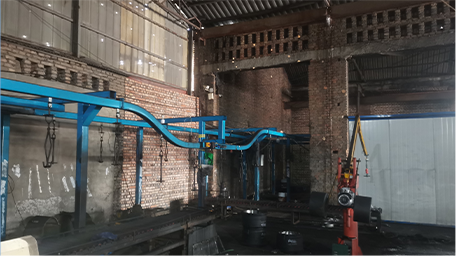Sep . 25, 2024 09:24 Back to list
Brake Drum Restoration Techniques for Enhanced Performance and Longevity
Brake Drum Reconditioning An Essential Maintenance Process
Brake drums play a crucial role in the braking system of vehicles, particularly those that rely on drum brakes. Over time, these components can suffer from wear and tear, leading to decreased performance and safety risks. Hence, brake drum reconditioning emerges as a vital maintenance process that not only extends the life of these parts but also ensures the vehicle operates smoothly and safely.
What is Brake Drum Reconditioning?
Brake drum reconditioning is the process of restoring worn or damaged brake drums to their original specifications. This can involve several steps, including cleaning, machining, and resurfacing the drum to remove any grooves, cracks, or deformities that may have developed due to friction and heat generated during braking. This process not only improves the functionality of the brake system but also enhances the overall driving experience.
The Importance of Reconditioning
When left untreated, worn brake drums can result in several issues, such as increased stopping distances, uneven braking, and even complete brake failure in extreme cases. This can pose serious safety risks not only to the driver but also to passengers and others on the road. Reconditioning brake drums helps mitigate these risks by ensuring that the drums are in optimal condition, thus improving their effectiveness.
Additionally, reconditioning is often more cost-effective than replacing brake drums entirely. New brake drums can be expensive, and for many vehicles, proper reconditioning can restore functionality without the need for new parts. This makes it a more sustainable and economical choice for vehicle owners.
brake drum reconditioning

The Reconditioning Process
The brake drum reconditioning process typically begins with a thorough inspection. Skilled technicians will assess the drum for any significant damage. If the wear is within acceptable limits, the next step involves cleaning the drum to remove any debris or brake dust that could affect performance.
Once cleaned, the drum is often machined. This involves using specialized equipment to resurface the inner drum surface, ensuring it is smooth and free of imperfections. This step is critical as it allows for even contact with the brake shoes, leading to improved braking performance.
In some cases, if the drum is excessively worn or damaged, it may be necessary to replace it. However, many drums can be reconditioned multiple times before they reach a point where replacement is necessary, making reconditioning a valuable part of vehicle maintenance.
Conclusion
Brake drum reconditioning is an essential maintenance process that can significantly improve the safety and performance of a vehicle's braking system. By restoring worn or damaged brake drums, vehicle owners can ensure their brakes function correctly, reducing the risk of accidents and enhancing overall vehicle longevity. Whether you're a car enthusiast or a casual driver, understanding the importance of brake drum reconditioning can lead to smarter maintenance decisions and safer driving experiences. Regular checks and timely reconditioning can make all the difference in maintaining an efficient and reliable vehicle.
-
Explore Japan: Ultimate Travel Guide & Authentic Experiences
NewsAug.19,2025
-
Your Brake Drum Man: Premium & Reliable Brake Drums for Sale
NewsAug.18,2025
-
ROR Web Development: Build Fast, Scalable, Secure Apps
NewsAug.17,2025
-
Scania Brake Drums: OEM Quality for Optimal Safety & Durability
NewsAug.16,2025
-
R.V.I: Advanced Remote Visual Inspection for Precision
NewsAug.15,2025
-
Discover HYUNDA: Innovative Vehicles, Equipment & Solutions
NewsAug.14,2025
